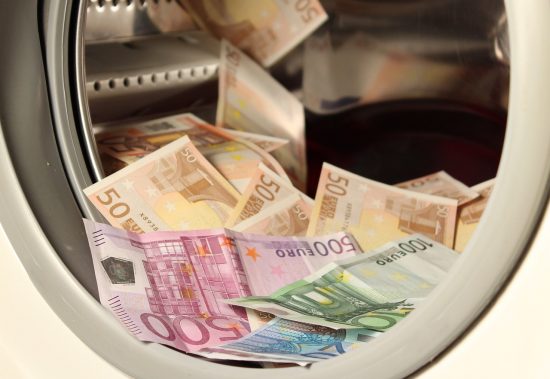‘Joker Printed Money’ — JPMorgan’s JPM Coin Is Not an Irony. It’s a Joke.
February 15, 2019 by Paul de Havilland
The creation of the JPM Coin, a new stablecoin issued by JPMorgan Chase, has been announced by the major American bank. But can it be taken seriously?
Also read: Fight or Flight? How Laws and a Lack of Trust Affect Bitcoin Trading
We love hearing from our readers. Sound off on our Twitter or Facebook pages
Check out our insights & interviews with influential insiders on the Bitsonline YouTube channel
And for the only source of UNFILTERED trading volume, head to CoinBillboard
Joker Printed Money… Jamie Dimon’s About-Face
Jamie Dimon is on record as ridiculing cryptocurrencies for a number of years. One of his more oft-quoted assertions about bitcoin (by which he means cryptocurrencies) is:
“If you’re stupid enough to buy it, you’ll pay the price some day.”
Behind all that noise, the bank had developed Quorum, a blockchain-backed platform for banks to use for cross-border and interbank money transfers. But JPMorgan’s reputation is so toxic that it considered spinning the platform off as its own entity, with rival banks reluctant to use it.
So news that the Jamie Dimon-led behemoth has decided to create a cryptocurrency, pegged 1:1 with the USD (adding to an increasing stockpile of redundant stablecoins), took many by surprise.
The Bank’s Rationale Makes Sense… Except it Doesn’t
JPMorgan’s announcement stated:
“JPM Coin is a digital coin designed to make instantaneous payments using blockchain technology. Exchanging value, such as money, between different parties over a blockchain requires a digital currency, so we created the JPM Coin.”
JPMorgan’s Umar Farooq appears to have made himself aware of the purpose of cryptocurrencies–allowing parties to transfer money to each other. But it misses another significant property of using blockchain technology to fuel money transfers: decentralization. As Gaurav Rana, CTO of fintech startup BABB recently said:
“The underlying basis of the technology consisted of a ledger that could be appended but never retroactively modified. The lack of central control over the system and the immutability of the ledger form the core characteristics of this technology, which are more accurately categorized as byzantine fault tolerant systems (BFTs).”
Ridicule, Fear, Loathing, and Claims of Hypocrisy
The initial crypto response was understandably cynical, with @WhalePanda kicking things off:
If you listen very carefully you will hear all Ripple holders now scream in agony.
Congrats @jpmorgan on creating a useless shitcoin.https://t.co/frM3POunQ1— WhalePanda (@WhalePanda) February 14, 2019
There is also the matter of trust in JPMorgan’s business practices. Much of the criticism of crypto was that its primary use case was crime such as money laundering, tax evasion, and for purchasing things that are illegal. As Bill Gates infamously said in a Reddit AMA:
“Right now, cryptocurrencies are used for buying Fentanyl and other drugs, so it is a rare technology that has caused deaths in a fairly-direct way.”
As for money laundering, JPMorgan is no stranger to financial crime. On June 30th, 2017, JPMorgan’s Geneva-based subsidiary was sanctioned by the Swiss FINMA for “seriously violating supervision laws”, being fined $2 billion USD. The ruling was in relation to the bank’s failure to conduct due diligence to prevent money laundering.
In an outstanding expose on JPMorgan’s activities, Todd Byrne at Bitsonline pointed to the sheer scale of criminality the bank engaged in–with a laundry list of fines and allegations it faced in 2013 alone:
- $4.5 billion to settle a case where it is alleged to have misrepresented mortgage bonds sold to a number of pension funds and other investors. This came after a $5.3 billion fine for mortgage loan servicing and foreclosure abuses in 2012.
- Over $900 million to settle an investigation into the London Whale scandal.
- $80 million for defrauding its own credit card customers–charging them over $390m (which it was forced to refund) for identity protection services it did not provide.
- $410 million for manipulating California’s electricity market.
- A whopping $13 billion for misrepresenting the mortgage backed securities it sold when it acquired the failed Bear Sterns and Washington Mutual MBS portfolios at the height of the financial crisis.
And Then There’s the Ripple Effect in the House of Garling
As many were quick to point out, the move potentially has the ability to undermine the entire business model of Ripple Labs. JPMorgan is now providing the same service Ripple does, and if other banks were to follow suit, there would be no need for Ripple’s offerings.
But in reality, JPMorgan had been running Quorum in the background for a number of years, without causing any turmoil in the crypto world. And Brad Garlinghouse, at least publicly, doesn’t appear too concerned about the threat, arguing that UBS, Deutsche Bank, Santander, and BNY Mellon had announced their “utility settlement coin,” by early 2018.
Citi Bank has its Citicoin and Goldman Sachs has its SETLcoin. In fact, in as far back as the Free Banking Era, between 1837 and 1866, banks, stores, companies, and just about anyone could issue paper money.
On a more personal note, Garlinghouse couldn’t resist taking a swipe at JPMorgan’s JPM Coin:
As predicted, banks are changing their tune on crypto. But this JPM project misses the point – introducing a closed network today is like launching AOL after Netscape’s IPO. 2 years later, and bank coins still aren’t the answer https://t.co/39EAiSJwAz https://t.co/e7t7iz7h21
— Brad Garlinghouse (@bgarlinghouse) February 14, 2019
JPM Coin Another in the Stable
If bank-issued digital asset printing were to continue unabated, then legacy financial institutions would be doing little more than engaging in exactly the same behavior they have been criticizing the cryptocurrency industry for–the endless printing of useless shitcoins.
JPM Coins are not quite Oyster Pearls, but they’re certainly not diamonds. Quite possibly, Jamie Dimon may have found himself in the historical position of going from fearless anti-crypto crusader to the inventor of the biggest shitcoin of all.
Sound off below. Is the JPM Coin–Joker Printed Money–going to make any difference to the crypto scene?
Images via Pixabay, Max Pixel





